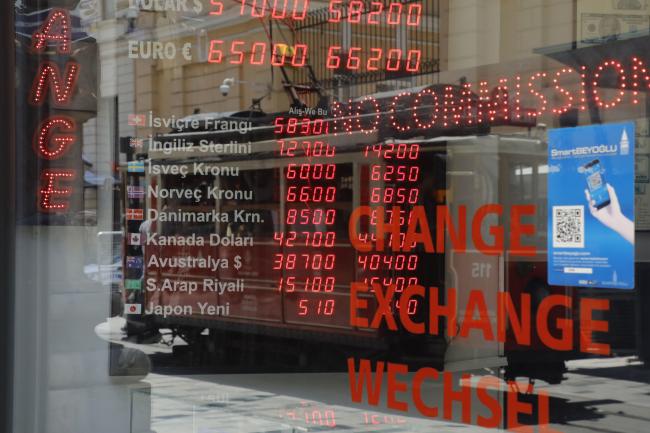(Bloomberg) -- Want the lowdown on European markets? In your inbox before the open, every day. Sign up here.
There are signs that concern in the global foreign exchange market over the deadly coronavirus may be wearing off.
Haven currency the Swiss franc slipped to nearly a three-week low against the dollar on Wednesday, even as the virus spread further. The Japanese yen, another traditional refuge, has failed to gain since Hong Kong initiated travel bans on Tuesday, while the Australian dollar is showing signs of weathering the outbreak.
Currency markets may be looking through headlines which have helped dictate sentiment across other asset classes. The move in the franc in particular indicates some traders have already adjusted their portfolios and are looking toward other risks instead.
Previous outbreaks of deadly diseases suggest currencies may be relatively resilient toward the spread of coronavirus, Nordea Bank Abp said in a research note earlier this week. While traditional bellwethers of risk appetite such as equities may face a temporary sell-off and bonds gain ground, moves in currencies are likely to be more contained, the bank predicted.
The haven moves may also be linked to speculation that the virus could prove less deadly than some of its predecessors.
“The latest focus seems to have shifted a bit to how the outbreak is progressing,” said Ned Rumpeltin, European head of foreign exchange strategy at Toronto-Dominion Bank in London. “This episode has eclipsed the infection rate of SARS, but there are also some indications that the relative severity of those cases may not be as acute.”
Option markets are now signaling less bearish sentiment on the Australian dollar, a commodity-linked currency influenced by the country’s trade with China. One-week risk reversals, a barometer of positioning and sentiment, rallied in favor of buying the Australian dollar by the most in five months on Wednesday.
Signs are also emerging that the euro could be about to strengthen against the Swiss franc. An indicator of whether the euro is oversold against the franc rebounded from a five-year low on Wednesday. The so-called relative strength index rose above 30, a level seen as signaling a reversal in direction.
On technical charts, a candle pattern on the euro’s spot price against the franc on Tuesday suggested the shared currency could rise, or at least that a short-term bottom is in place.
Moreover, the euro-franc pair closed above a key long-term level at 1.0673, the 38.2% Fibonacci retracement of its gains since January 2015. That was when the Swiss National Bank removed its currency cap against the euro and triggered one of the biggest shakeups in foreign-exchange history. Options pricing remains relatively steady, as bets for a stronger franc in the short-term have lost traction since Jan. 17.
- NOTE: Vassilis Karamanis is an FX and rates strategist who writes for Bloomberg. The observations he makes are his own and are not intended as investment advice
